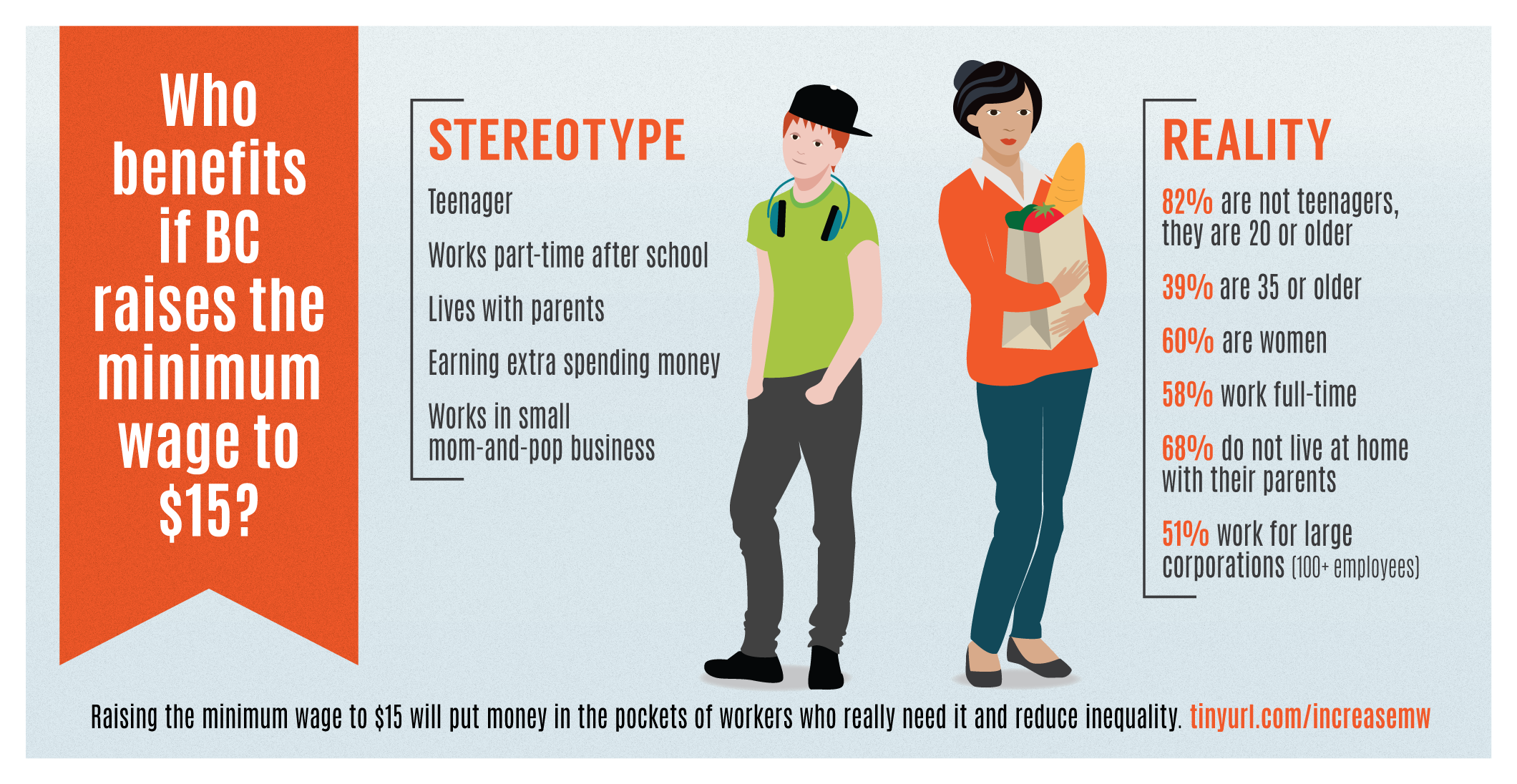The term “living wage” refers to wages that are high enough to maintain a normal standard of living. Minimum wages across the country, as they stand, are not living wages. There is an ongoing myth that individuals working in minimum wage jobs are teenagers and earning extra money for pocket change. The below infographic, published by the Canadian Centre for Policy Alternatives, takes a look at who really benefits from an increase to British Columbia’s minimum wage.
The reality is that the majority of minimum wage jobs are the sole source of income for many households. Over 80% of all minimum wage jobs in BC are held by individuals aged 20 or older. A significant portion of these jobs, almost 40%, are held by workers aged 35 or older. Clearly, stereotypes about the identity of minimum wage workers are not rooted in reality.
A common perception is that individuals living in poverty, including those who are homeless, find themselves in their situations because “they are lazy” or “not willing to look for a job”. However, the rising cost of housing and other basic needs, like nutritious food, has not in any way corresponded with a similar rise in incomes for both middle and lower income households. A job, on its own, no longer guarantees freedom from poverty. Poverty persists in households where individuals are employed. In 2012, at least one member of the household was employed in a staggering 44% of all poor households in Canada. The number of temporary, low-paying jobs continue to increase while protected well-paying jobs are increasingly scarce.
One argument against increasing the minimum wage is that it will lead to serious job loss. Analysis conducted by Dr. David Green, a former chair of the Vancouver school of economics in BC, suggests otherwise. Green surveyed available academic literature and found that “estimates for BC showing job loss effects of minimum wage increases apply only to teenagers”. Furthermore, estimated job loss effects for young adult and adult workers are insignificant to non-existent.
Instead, the report notes that evidence in Canada highly suggests that an increase in minimum wages leads to low turnover rates. The term turnover rate is used to refer to the percentage of employees in a workforce who leave during a certain period of time. Workers are more likely to have jobs that are both well paying and stable as minimum wages increase. This means that increasing the minimum wage to a more livable wage can actually contribute against trends of growing employment precarity.
If we want to bridge the growing economic inequality gap in Canada, we have to begin considering measures that can directly increase the incomes of households experiencing tremendous financial strain. Increasing the minimum wage is an example of such a measure.


